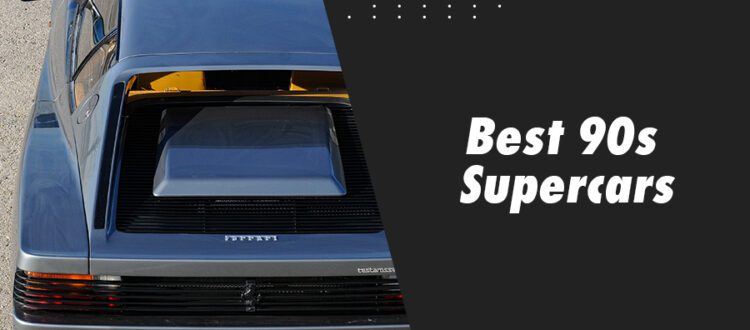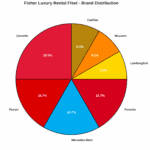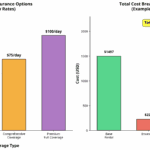Best 90s Supercars
The high-performance supercar market went from niche to mainstream in a blink of an eye during the 80s. Supercars like the Ferrari F50, Bugatti EB110, and, of course, the legendary McLaren F1 collectively wowed enthusiasts worldwide, representing the golden era of automotive innovation. With Wall Street humming and the global economy in good condition, the appetite for exotic cars grew in the early 1990s. With some of the best 90s supercars setting the stage for modern performance vehicles, their legacy is still felt today.
Whether you’re an enthusiast or someone seeking that perfect exotic ride, we’ve got you covered. Below, we’ll talk about the best of the best and explain how these cars redefined the automotive industry forever.
Criteria for Selecting the Best Supercars of the 90s
When choosing the best of the best, several factors come into play.
The vehicle’s engine power, top speed, and acceleration performance are very important. These cars were designed with a specific purpose – to push the limits of performance and engineering.
The styling and design of these cars is not merely for show – they are crafted with the intention of optimizing performance at extreme speeds through a seamless combination of function and form. When it comes to aesthetics, 90s supercars were not just about aerodynamics and bold, aggressive looks; they were designed for a strong presence and high utility.
Limited production numbers make these cars even more exclusive, turning heads wherever they are. This makes them a true status symbol for those lucky enough to get behind the wheel.
And finally, their legacy is the number one reason why they became an iconic staple in the world of supercars. We look for cars that have redefined the automotive industry, setting new standards for what supercars can achieve.
Top 5 Supercars of the 90s
Here’s our list of the 5 most iconic supercars in the 90s:
McLaren F1
Originally a concept conceived by the legendary Gordon Murray and his team, the out-of-this-world supercar would not have been made possible without the designer Peter Stevens. Never seen before, the McLaren F1 introduced a three-seat setup, with the driver taking the central position. The central drive position gave a feeling as if you were a part of the supercar. The main reason for the iconic seating arrangement, the head designer Gordon Murray said, was to eliminate the off-pedal box that forced many Formula drivers to sit askew while driving.
The three-seater produced an unparalleled 627 bhp from a BMW V-12 engine. Powered by a 6.1 liter 48 valve V-12 engine by BMW with aluminum block and heads, the greatest car of all time was able to deliver over 618 horsepower. It became the fastest naturally aspirated production car in history, reaching a top speed of 240.14 mph and a 0-60 mph time of 3.1 seconds – a record that stood for decades. What truly left everyone in awe was the 16 grams of gold foil incorporated into the S70/2 engine. Not only did the gold add a touch of luxury, but it also served a practical purpose—providing essential heat protection.
The McLaren was the first road car to feature a carbon fiber chassis, dramatically reducing its weight. Combined with its aerodynamic design and packages, it enhanced both speed and stability.
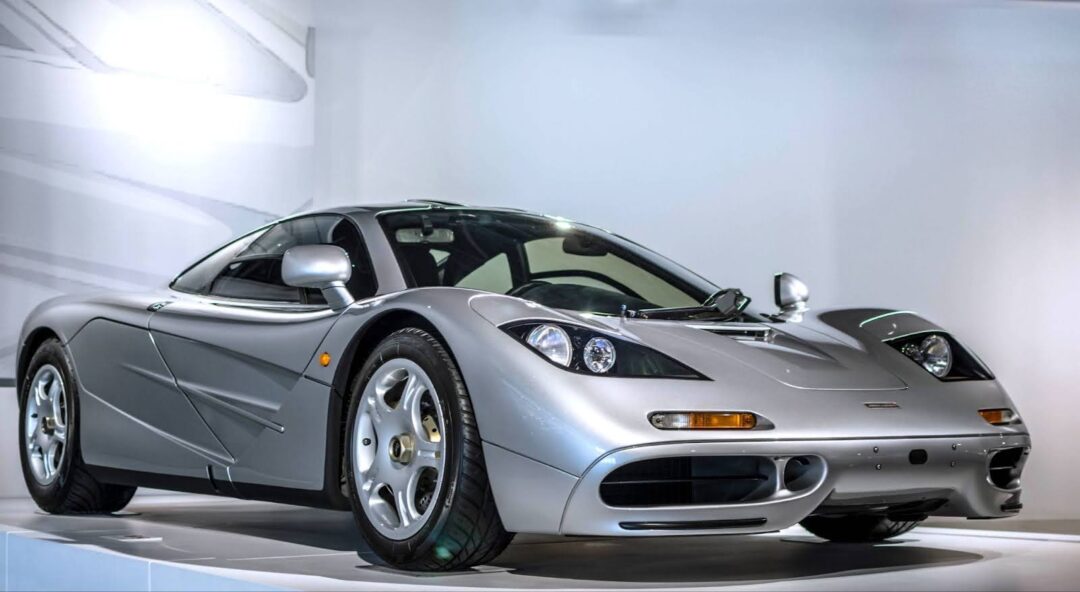
Source: shutterstock.com / Photo Contributor: Johnnie Rik
Ferrari F50
The Ferrari F50, produced from 1995 to 1997, stands as one of Ferrari’s most outstanding creations. With only 349 units ever made, this supercar brought Formula 1 technology to the streets, blending raw power with a sleek, hard-to-miss aesthetic.
Under the hood, Ferrari installed a naturally aspirated 4.7-liter V12 engine adapted from Ferrari’s Formula 1 team. This allowed the F50 to produce 520 horsepower, enabling it to accelerate from 0 to 62 mph in just 3.9 seconds. The engine, paired with a six-speed manual gearbox, was able to deliver a top speed of 202 mph.
Similar to the McLaren, Ferrari’s aerodynamic design, styled by Pininfarina, was immediately recognized by its massive rear wing and front air extraction vents. However, Pininfarina’s design wasn’t only for show – it produced significant downforce, keeping the car stable while reaching incredibly high speeds.
Inside, the designer added bucket seats wrapped in Alcantara with high bolstering. While it had manual window cranks and a few luxury features, Ferrari didn’t consider covering the exposed carbon-fiber interior, highlighting their focus on performance and power.
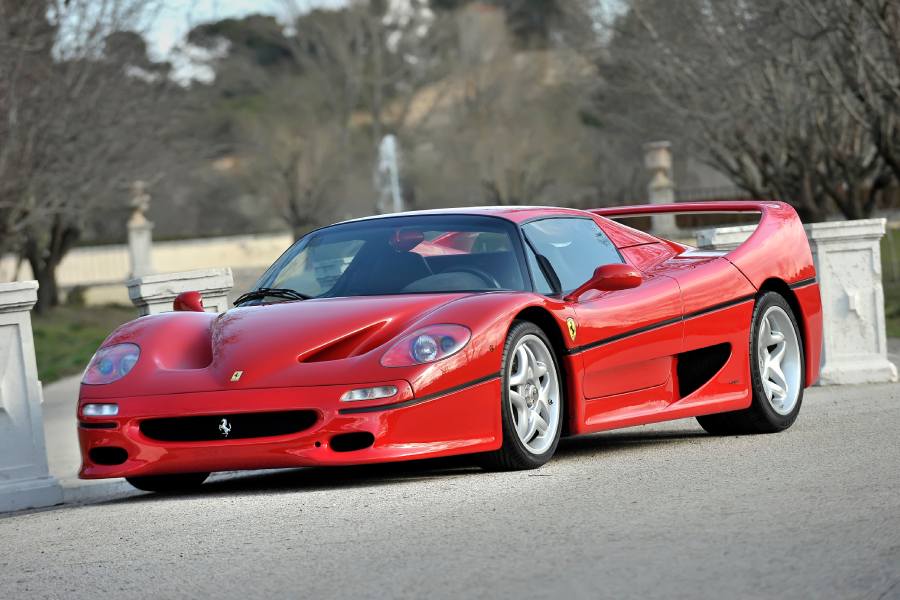
Source: shutterstock.com / Photo Contributor: FernandoV
Lamborghini Diablo
The supercar legend Lamborghini Diablo, produced from 1990 to 2001, succeeded the iconic Countach and set a new standard for high-performance supercars in the 90s. It was even hailed as the fastest car of the decade.
With its sleek design, penned by Marcello Gandini, the Diablo carried a signature aesthetic at the time. It features a sharp front end, a raked windscreen, and iconic scissor doors. However, Chrysler, which acquired Lamborghini in 1987, refined the design to improve aerodynamics and cooling, creating an ever more visually striking beast with improved functionality.
At its heart, the Lamborghini Diablo hosts a 5.7L – 6.0L naturally aspirated V12 engine, which delivers nearly 500 horsepower. This powerful engine allows the car to accelerate from 0 to 60 mph in only 4.5 seconds. On top of that, Diablo also reached a top speed of 202 mph, making it one of the fastest cars of its time next to the Ferrari F50.
With its unmistakable roaring exhaust note, the Lamborghini offered a visceral experience that outshone all of its competitors.

Source: shutterstock.com / Photo Contributor: Francisco_Goncalves
Porsche 911 GT (1996-1998)
Now, one of the most extreme supercars of the 90s – the Porsche 911 GT, produced from 1996 to 1998, has a reputation as a “street-legal race car”. Initially, it was built for homologation in GT racing but was then adapted for the road, combining sheer power and an unmatched design.
With a twin-turbocharged 3.6L flat-6 engine, the GT produced 424 horsepower in its road-legal form and a top speed of nearly 190 mph. With its aggressive styling, the carmaker featured wider wheel flares, an oversized rear spoiler with integrated air scoops, and an aerodynamic front splitter. Besides giving it a sharp look, these designs also played a role in producing significant downforce, enhancing stability at high speeds, all while improving airflow for better engine cooling.
The 911 GT is Porsche’s testament to engineering excellence and prowess, seamlessly blending performance and racing in a legendary 90s supercar.
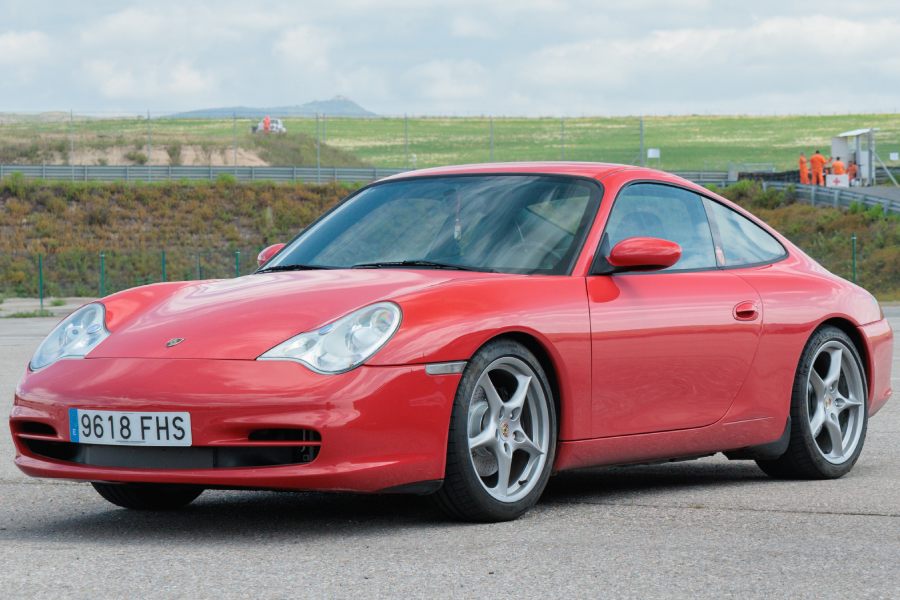
Source: shutterstock.com / Photo Contributor: Roman Belogorodov
Bugatti EB110 (1991-1995)
One of the most advanced supercars of its time, the Bugatti EB110, produced between 1991 and 1995, was a technological marvel.
This exotic masterpiece was a rebirth of Bugatti, marked by the collaboration of several renowned designers, including Romano Artioli, Marcello Gandini, Giampaolo Benedini, and several other engineers who’ve worked together on other supercars. The final design of the EB110 was completed with the removal of pop-up headlights and an elevation at the front end. They also incorporated wider air intakes and strategically placed air vents to enhance downforce at high speeds.
Powered by a 3.5-liter quad-turbo V12 engine, the Bugatti produces 553 horsepower and can reach a top speed of 212.5 mph. The engine allows it to accelerate from 0 to 60 mph in only 3.4 seconds, close to the performance numbers of the legendary McLaren.
Inside, the car featured wood accents on the dash and leather on the seats, boasting a luxurious feel and expert craftsmanship. The scissor doors and partially opening windows added to its sleek design and exotic allure.
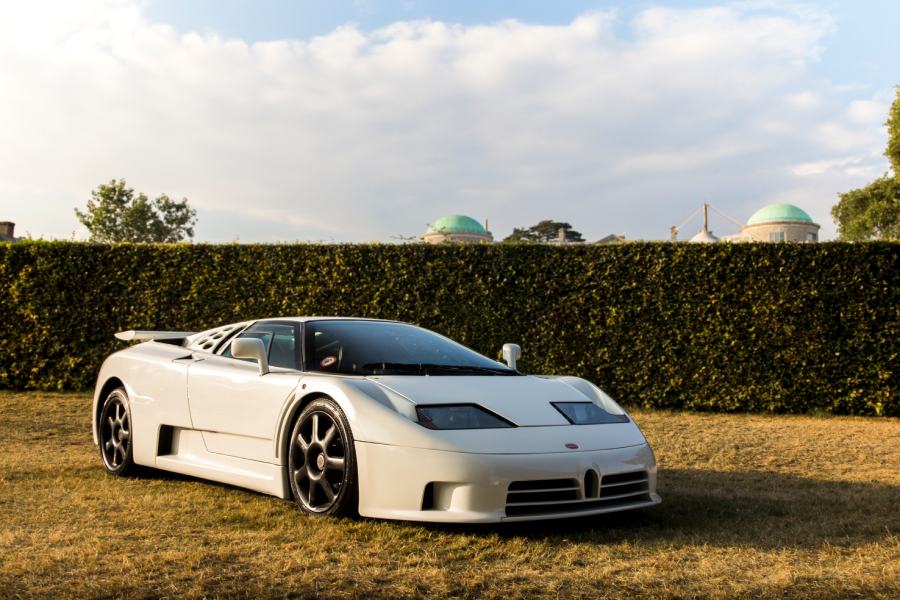
Source: shutterstock.com / Photo Contributor: dimcars
Other Honorable Mentions
Dodge Viper
Launched in 1992, the Dodge Viper represented the return of raw, unfiltered power back to the supercar scene. It’s built around a monstrous 8.0-liter V-10 engine producing 400 horsepower that delivers a thrilling performance. While the Dodge Viber creators emphasized speed and driver skill, it lacked basic features like AC and door handles.
So, while difficult to handle, the Dodge was a rewarding experience for anyone who could tame the beast.
Jaguar XJ220
Initially planned to host a 12-cylinder engine with an advanced four-wheel-drive system, the Jaguar XJ220 evolved into a rear-wheel-drive model equipped with a twin-turbo V6, delivering 549 horsepower and a top speed of 217 mph. This made it the fastest road-legal vehicle until the McLaren F1 came along. While it received some backlash, the XJ220 remains a big player in the 90s supercar scene.
Cizeta-Moroder V16T
Born from the collaboration of Claudio Zampolli, Giorgio Moroder, and Marcello Gandini, the Cizeta-Moroder V16T featured a 16-cylinder engine that produced 560 horsepower, reaching a top speed of 203 mph. However, only 20 units were built. The V16T remains a staple of 90s supercar excellence, with a hand-built design.
Yamaha OX99-11
Yamaha’s desire to dominate F1 competition created a remarkable beast of a car – the OX99-11. While it was powered by a 3.5-liter V-12 engine producing 400 horsepower, the car’s design is what took the spotlight. Its unusual allure, with tandem seating, was nothing but striking. However, the project was cut short due to economic collapse, leaving behind an almost mythical creation.
Lister Storm
Finally, one of the rarest supercars in the 90s with only 4 Lister Storms sold, the car featured a remarkable 7.0-liter V-12 engine producing 550 horsepower. This beast, while with an unusual appearance, was a GT racing machine with a thunderous roar, living up to its name in both power and presence.
Conclusion
Our list of the best 90s supercars represents a golden era of automotive innovation. These legendary masterpieces are not merely vehicles but a celebration of history, a testament of excellence and innovation, and a thrilling invitation to embrace the extraordinary.
It’s impossible to talk about such an era without mentioning the mighty McLaren F1, which set new standards for what supercars can achieve. At the other end of the spectrum, the Ferrari F50, Lamborghini Diablo, and Bugatti EB110 came along and shook up the industry with jaw-dropping technology.
With each car telling a story of creativity and passion, they remind us that true greatness lies in the pursuit of perfection. Now, it’s your turn to experience the legacy of these machines.
Let us help you find the perfect supercar to turn your next drive into an unforgettable journey!

